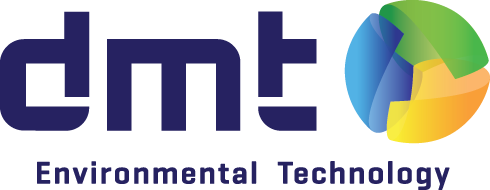Jevnaker, Bio-CNG production in the city
Circular City: Green fuel from household waste!
The story begins in 1992, when the winter Olympic games came to Lillehammer, Norway. The games were promoted as “Green Olympic Games”, the city of Jevnaker and surrounding towns wanted to play an active role in this. This resulted in a consortium of waste facilities working together to create one modern composting facility, run by the newly established company HRA; Hadeland og Ringerike Avfallsselskap.
Over the years it was further expanded with recycling facilities, extra composting plants and plastic separation. In 2005 HRA build the first biogas plant which was expanded in 2014. At that same time, biogas upgrading facilities were built by DMT and was opened by the minister of Climate and Environment. The Bio-CNG is now being used to fuel the waste collection trucks which in fact drive on the waste it collects.
The amount of biogas it produces is that large that it is also being sold to fuel busses and cars in Oslo. HRA received twice the industry award for innovation efforts to transform organic household waste to environmentally friendly fuel.
The challenge
The need: Every second the equivalent of six garbage trucks with organic waste is wasted globally. In cities, less than 2% of the valuable nutrients in organic or food by-products and human waste are recovered for productive use. Beside this enormous lost potential, cities around the world have serious problems with air pollution caused by transport and industry. But it is also the cities that hold the key to change this.
Energy recovery
Cities can contribute significantly in the recovery of energy and nutrients from the organic fraction of waste, and simultaneously battle the air pollution. The Town of Jevnaker in Norway is the perfect example of that, and it proved that by collecting the organic household waste, separating the organic fraction and creating biogas from it. The biogas is then upgraded. DMT supplied the city with a biogas upgrading technology. High selective membranes separate the CO2 from the methane and the gas is converted into BIO-CNG. Upgraded biogas which not only powers the household waste collection trucks but also can supply fuel for buses, trucks and privately own cars. Besides that, the facility has a composting plant so that the organic fraction is being re-used and not burned.

Besides the recovery of nutrients via composting the city creates bio-CNG. Compressed Natural gas upgraded from biogas which is used as a green and clean vehicle fuel. Bio-CNG has is a clean alternative fuel, has no CO2 contribution and therefore contributes to minimizing the air pollution. Through the successful operation, awareness in the surrounding is raised and surrounding towns has joined the scheme and benefit from this positive shift.

The solution
Cities can contribute significantly in the recovery of energy and nutrients from the organic fraction of waste, and simultaneously battle the air pollution. The Town of Jevnaker in Norway is the perfect example of that, and it proved that by collecting the organic household waste, separating the organic fraction and creating biogas from it.
The biogas is then upgraded. DMT supplied the city with a Carborex®MS, a biogas upgrading technology. High slective membranes separate the CO2 form the methane and is converted into BIO-CNG.
Upgraded biogas which not only powers the household waste collection trucks but also can supply fuel for buses, trucks and privately own cars. Besides that, the facility has a composting plant so that the organic fraction is being re-used and not burned.
Besides the recovery of nutrients via composting the city creates bio-CNG. Compressed Natural gas upgraded from biogas which is used as a green and clean vehicle fuel. Bio-CNG has is a clean alternative fuel, has no CO2 contribution and therefore contributes to minimizing the air pollution. Through the successful operation, awareness in the surrounding is raised and surrounding towns has joined the scheme and benefit from this positive shift.

Citylife and waste
Cities, through their unique characteristics, assets and capabilities, could play a key role in changing this. By 2050 the UN predicts that 68% of the people are living in cities. Due to higher living standards in the cities, it is predicted that 80% of all food will be destined for cities and thus if handled well creating new forms of value for the bio-economy and tackling at the same time part of the air pollution problem.
For these reasons, cities have a great influence to shape the way how we handle waste and combat air pollution. The ongoing work in Jevnaker is a great example of how a pragmatic approach can make a great contribution to green mobility, improved air quality and re-use of natural nutrients.
The source of the feedstock for this biogas upgrading project is the waste handling for 66.000 inhabitants of the Hadeland (Jevnaker) region. The total amount of waste that is collected is organic waste 15.000 tonnes
The project
Biogas from municipal solid waste Biogas production: 400 Mm3/h (maximum output) Bio-CNG: 240 nm3/h

